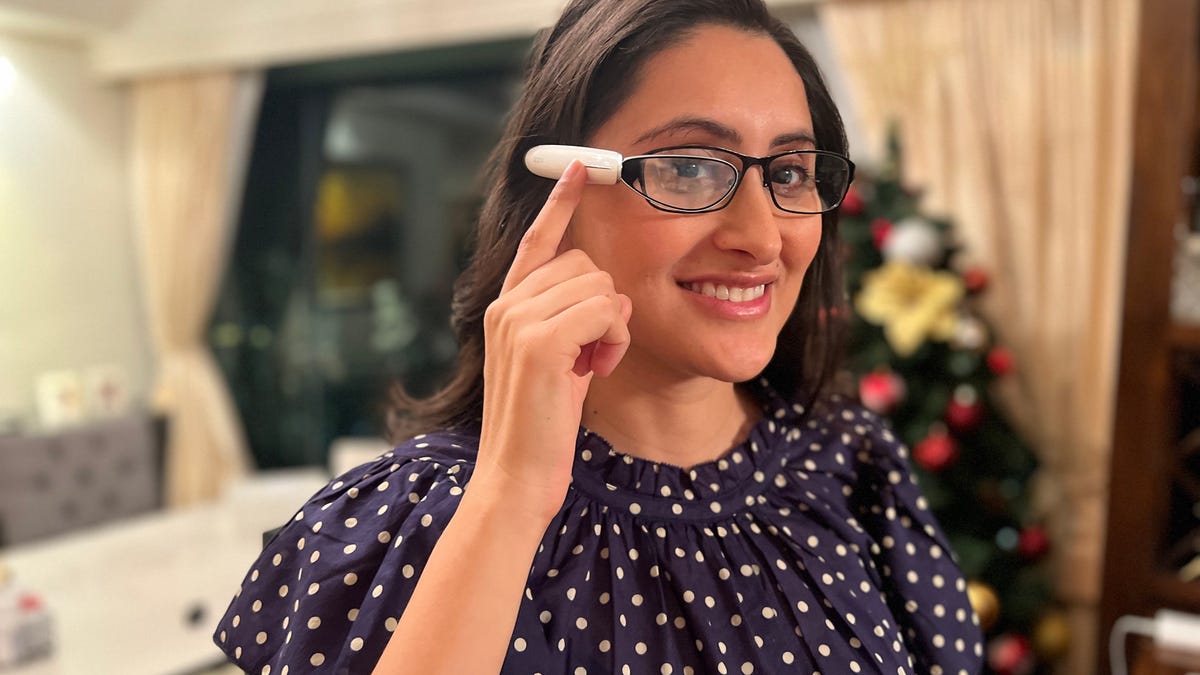Oppo unveils Air Glass, its vision for the future of smart glasses
The company enters the smart eyewear niche. This is our hands-on experience with Air Glass.

The Oppo Air Glass aims to provide information from your phone by projecting it onto the lenses.
Smart glasses were supposed to be the next big thing... nearly a decade ago. Fast forward to 2021, and they've failed to become part of our daily lives, reduced to a mostly forgotten corner of consumer tech history.
Chinese consumer electronics giant Oppo wants to change that and has taken its first commercial stab at making smart glasses a thing. Enter the Oppo Air Glass, a pair of lightweight glasses designed to help you "get more out of everyday life."
The Oppo Air Glass is essentially a set of spectacles that come with an additional glass frame attachment that magnetically snaps onto the right side of the frame. The frame, which has a magnetic component, is used to house the projector, motherboard, Snapdragon Wear 4100 Platform, battery, Wi-Fi and Bluetooth antennas, microphones and a speaker. There is currently no camera.
The superb thing about the Air Glass? You can use it by swiping the touch bar on the right side of the frame, as well as through hand gestures and head shakes. There is no wire on this device, just that snap-on attachment, paired via Bluetooth to the Reno 6 Pro phone Oppo sent me, or the company's Watch 2. (The Air Glass doesn't yet have support for other Android phones or iOS.)
For now, the Air Glass will receive a limited release within mainland China in the first quarter of 2022. It seems Oppo is testing the market given the smaller rollout, but I wouldn't be surprised if it gets a broader international release in the coming years. Pricing details were not available at time of writing.
To understand the space that Oppo's Air Glass fills in the world of smart eyewear, let's first consider what it is not. The Air Glass is not a pair of VR glasses, cutting you off from real-world surroundings, nor does it attempt to beam you into the metaverse or any other virtual world. Oppo says that it strives to assist reality rather than augment it.
Oppo's Air Glass displaying weather in the Chinese city of Nanshan.
Based on my limited time with the Air Glass, I think that Oppo achieves this. The Glass is helped by its unique shape and lightweight design (30 grams), which enables day-to-day use and makes the device more functional. To me, the Air Glass seems to offer a practical and user-friendly way for the average person to adjust to the prospect of smart glasses.
Read more: Qualcomm is building a bridge between phones and smart glasses
Unfortunately, I wasn't able to test out all of the Air Glass's functions. The displayed text appeared blurry, and at times illegible to me, even though I used prescription contact lenses. If you have 20/20 vision, you likely won't run into this issue.
Still, I was able to experience the Air Glass at a more basic level. By swiping back on the frame, I could check the weather, read my calendar and use an impressive teleprompter-like function. To use it, all you need to do is upload a document into the Smart Glass app, hit play on the phone, then that script will display in a rolling format on your glasses. It seems ideal for delivering speeches on Zoom or referring to notes during an online meeting. Oppo says it uses an optical waveguide technology, a relatively mature tech already used industrially, to present information. The screen itself is fairly bright, offering a peak brightness of 1,400 nits with 640 by 480-pixel resolution.
The glasses could be ideal for quick glances at the weather, calendar or as a teleprompter.
Oppo is excited about its live translation feature, designed to allow people to communicate face-to-face in different languages by translating spoken word as text on the Air Glass display. I didn't get to test that either. Oppo says the system can automatically detect your preferred language, translating automatically from English to Chinese and vice versa. But that's something I'd need to see in person to appreciate. It sounds like something straight out of a science fiction movie.
Despite my short time with the device, I think the device's potential was obvious. This could be exactly the type of gadget to prime the average person towards more heavy-duty metaverse focused headsets in the works by Facebook and its rivals. It's still early days, and the device seems to be an experiment, but I'd be eager to test an international version of Air Glass if Oppo ever comes out with them.

